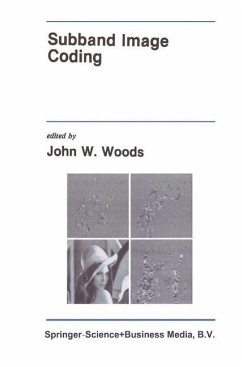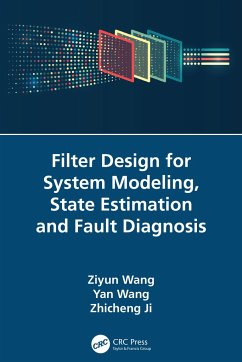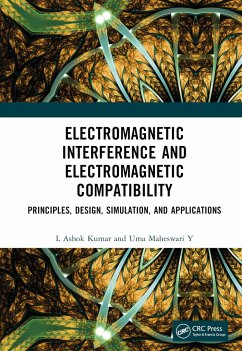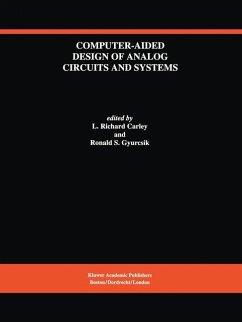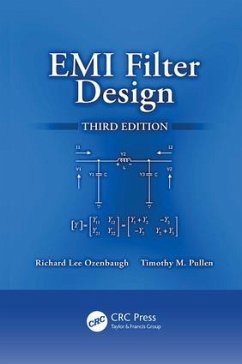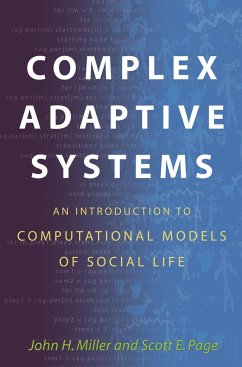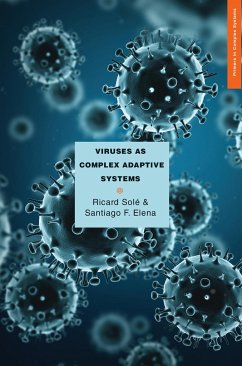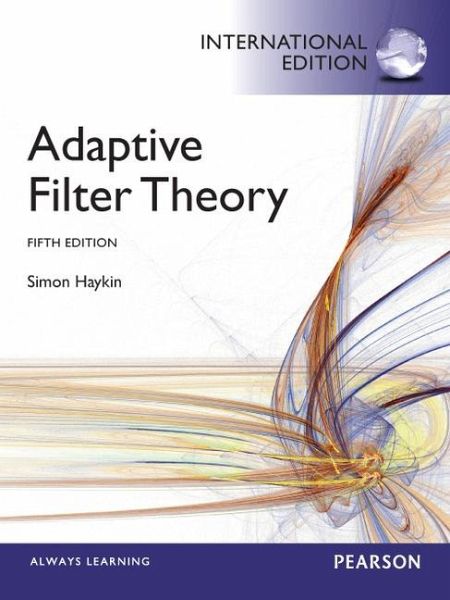
Adaptive Filter Theory
International Edition

PAYBACK Punkte
65 °P sammeln!
For courses in Adaptive Features + Benefits
In-depth treatment of adaptive filters in a highly readable and understandable fashion.
Website (http://www.pearsoninternationaleditions.com )
Includes a highly intensive research program on the applications of adaptive filters and neural networks to signal processing and communications with emphasis on: space-time wireless communications, radar surveillance, and chaotic signal processing.
Extensive use of illustrative examples.
Extensive use of MATLAB experiments—Illustrates the practical realities and intricacies of adaptive filters, the codes for which can be downloaded from the Web.
Extensive bibliography of the subject.
Preface
Acknowledgments
Background and Preview
1. The Filtering Problem
2. Linear Optimum Filters
3. Adaptive Filters
4. Linear Filter Structures
5. Approaches to the Development of Linear Adaptive Filters
6. Adaptive Beamforming
7. Four Classes of Applications
8. Historical Notes
Bibliography
Chapter 1 Stochastic Processes and Models
1.1 Partial Characterization of a Discrete-Time Stochastic Process
1.2 Mean Ergodic Theorem
1.3 Correlation Matrix
1.4 Correlation Matrix of Sine Wave Plus Noise
1.5 Stochastic Models
1.6 Wold Decomposition
1.7 Asymptotic Stationarity of an Autoregressive Process
1.8 Yule—Walker Equations
1.9 Computer Experiment: Autoregressive Process of Order Two
1.10 Selecting the Model Order
1.11 Complex Gaussian Processes
1.12 Power Spectral Density
1.13 Properties of Spectral Density
1.14 Transmission of a Stationary Process Through a Linear Filter
1.15 Cramér Spectral Representation for a Stationary Process
1.16 Power Spectrum Estimation
1.17 Other Statistical Characteristics of a Stochastic Process
1.18 Polyspectra
1.19 Spectral-Correlation Density
1.20 Summary and Discussion
Problems
Bibliography
Chapter 2 Wiener Filters
2.1 Linear Optimum Filtering: Statement of the Problem
2.2 Principle of Orthogonality
2.3 Minimum Mean-Square Error
2.4 Wiener—Hopf Equations
2.5 Error-Performance Surface
2.6 Multiple Linear Regression Model
2.7 Example
2.8 Linearly Constrained Minimum-Variance Filter
2.9 Generalized Sidelobe Cancellers
2.10 Summary and Discussion
Problems
Bibliography
Chapter 3 Linear Prediction
3.1 Forward Linear Prediction
3.2 Backward Linear Prediction
3.3 Levinson—Durbin Algorithm
3.4 Properties of Prediction-Error Filters
3.5 Schur—Cohn Test
3.6 Autoregressive Modeling of a Stationary Stochastic Process
3.7 Cholesky Factorization
3.8 Lattice Predictors
3.9 All-Pole, All-Pass Lattice Filter
3.10 Joint-Process Estimation
3.11 Predictive Modeling of Speech
3.12 Summary and Discussion
Problems
Bibliography
Chapter 4 Method of Steepest Descent
4.1 Basic Idea of the Steepest-Descent Algorithm
4.2 The Steepest-Descent Algorithm Applied to the Wiener Filter
4.3 Stability of the Steepest-Descent Algorithm
4.4 Example
4.5 The Steepest-Descent Algorithm as a Deterministic Search Method
4.6 Virtue and Limitation of the Steepest-Descent Algorithm
4.7 Summary and Discussion
Problems
Bibliography
Chapter 5 Method of Stochastic Gradient Descent
5.1 Principles of Stochastic Gradient Descent
5.2 Application: Least-Mean-Square (LMS) Algorithm
5.3 Gradient-Adaptive Lattice Filtering Algorithm
5.4 Other Applications of Stochastic Gradient Descent
5.5 Summary and Discussion
Problems
Bibliography
Chapter 6 The Least-Mean-Square (LMS) Algorithm
6.1 Signal-Flow Graph
6.2 Optimality Considerations
6.3 Applications
6.4 Statistical Learning Theory
6.5 Transient Behavior and Convergence Considerations
6.6 Efficiency
6.7 Computer Experiment on Adaptive Prediction
6.8 Computer Experiment on Adaptive Equalization
6.9 Computer Experiment on Minimum-Variance Distortionless-Response Beamformer
6.10 Summary and Discussion
Problems
Bibliography
Chapter 7 Normalized Least-Mean-Square (LMS) Algorithm and Its Generalization
7.1 Normalized LMS Algorithm: The Solution to a Constrained Optimization Problem
7.2 Stability of the Normalized LMS Algorithm
7.3 Step-Size Control for Acoustic Echo Cancellation
7.4 Geometric Considerations Pertaining to the Convergence Process for Real-Valued Data
7.5 Affine Projection Adaptive Filters
7.6 Summary and Discussion
Problems
Bibliography
Chapter 8 Block-Adaptive Filters
8.1 Block-Adaptive Filters: Basic Ideas
8.2 Fast Block LMS Algorithm
8.3 Unconstrained Frequency-Domain Adaptive Filters
8.4 Self-Orthogonalizing Adaptive Filters
8.5 Computer Experiment on Adaptive Equalization
8.6 Subband Adaptive Filters
8.7 Summary and Discussion
Problems
Bibliography
Chapter 9 Method of Least Squares
9.1 Statement of the Linear Least-Squares Estimation Problem
9.2 Data Windowing
9.3 Principle of Orthogonality Revisited
9.4 Minimum Sum of Error Squares
9.5 Normal Equations and Linear Least-Squares Filters
9.6 Time-Average Correlation Matrix Φ
9.7 Reformulation of the Normal Equations in Terms of Data Matrices
9.8 Properties of Least-Squares Estimates
9.9 Minimum-Variance Distortionless Response (MVDR) Spectrum Estimation
9.10 Regularized MVDR Beamforming
9.11 Singular-Value Decomposition
9.12 Pseudoinverse
9.13 Interpretation of Singular Values and Singular Vectors
9.14 Minimum-Norm Solution to the Linear Least-Squares Problem
9.15 Normalized Least-Mean-Square (LMS) Algorithm Viewed as the Minimum-Norm Solution to an Underdetermined Least-Squares Estimation Problem
9.16 Summary and Discussion
Problems
Bibliography
Chapter 10 The Recursive Least-Squares (RLS) Algorithm
10.1 Some Preliminaries
10.2 The Matrix Inversion Lemma
10.3 The Exponentially Weighted RLS Algorithm
10.4 Selection of the Regularization Parameter
10.5 Update Recursion for the Sum of Weighted Error Squares
10.6 Example: Single-Weight Adaptive Noise Canceller
10.7 Statistical Learning Theory
10.8 Efficiency
10.9 Computer Experiment on Adaptive Equalization
10.10 Summary and Discussion
Problems
Bibliography
Chapter 11 Robustness
11.1 Robustness, Ad
In-depth treatment of adaptive filters in a highly readable and understandable fashion.
Website (http://www.pearsoninternationaleditions.com )
Includes a highly intensive research program on the applications of adaptive filters and neural networks to signal processing and communications with emphasis on: space-time wireless communications, radar surveillance, and chaotic signal processing.
Extensive use of illustrative examples.
Extensive use of MATLAB experiments—Illustrates the practical realities and intricacies of adaptive filters, the codes for which can be downloaded from the Web.
Extensive bibliography of the subject.
Preface
Acknowledgments
Background and Preview
1. The Filtering Problem
2. Linear Optimum Filters
3. Adaptive Filters
4. Linear Filter Structures
5. Approaches to the Development of Linear Adaptive Filters
6. Adaptive Beamforming
7. Four Classes of Applications
8. Historical Notes
Bibliography
Chapter 1 Stochastic Processes and Models
1.1 Partial Characterization of a Discrete-Time Stochastic Process
1.2 Mean Ergodic Theorem
1.3 Correlation Matrix
1.4 Correlation Matrix of Sine Wave Plus Noise
1.5 Stochastic Models
1.6 Wold Decomposition
1.7 Asymptotic Stationarity of an Autoregressive Process
1.8 Yule—Walker Equations
1.9 Computer Experiment: Autoregressive Process of Order Two
1.10 Selecting the Model Order
1.11 Complex Gaussian Processes
1.12 Power Spectral Density
1.13 Properties of Spectral Density
1.14 Transmission of a Stationary Process Through a Linear Filter
1.15 Cramér Spectral Representation for a Stationary Process
1.16 Power Spectrum Estimation
1.17 Other Statistical Characteristics of a Stochastic Process
1.18 Polyspectra
1.19 Spectral-Correlation Density
1.20 Summary and Discussion
Problems
Bibliography
Chapter 2 Wiener Filters
2.1 Linear Optimum Filtering: Statement of the Problem
2.2 Principle of Orthogonality
2.3 Minimum Mean-Square Error
2.4 Wiener—Hopf Equations
2.5 Error-Performance Surface
2.6 Multiple Linear Regression Model
2.7 Example
2.8 Linearly Constrained Minimum-Variance Filter
2.9 Generalized Sidelobe Cancellers
2.10 Summary and Discussion
Problems
Bibliography
Chapter 3 Linear Prediction
3.1 Forward Linear Prediction
3.2 Backward Linear Prediction
3.3 Levinson—Durbin Algorithm
3.4 Properties of Prediction-Error Filters
3.5 Schur—Cohn Test
3.6 Autoregressive Modeling of a Stationary Stochastic Process
3.7 Cholesky Factorization
3.8 Lattice Predictors
3.9 All-Pole, All-Pass Lattice Filter
3.10 Joint-Process Estimation
3.11 Predictive Modeling of Speech
3.12 Summary and Discussion
Problems
Bibliography
Chapter 4 Method of Steepest Descent
4.1 Basic Idea of the Steepest-Descent Algorithm
4.2 The Steepest-Descent Algorithm Applied to the Wiener Filter
4.3 Stability of the Steepest-Descent Algorithm
4.4 Example
4.5 The Steepest-Descent Algorithm as a Deterministic Search Method
4.6 Virtue and Limitation of the Steepest-Descent Algorithm
4.7 Summary and Discussion
Problems
Bibliography
Chapter 5 Method of Stochastic Gradient Descent
5.1 Principles of Stochastic Gradient Descent
5.2 Application: Least-Mean-Square (LMS) Algorithm
5.3 Gradient-Adaptive Lattice Filtering Algorithm
5.4 Other Applications of Stochastic Gradient Descent
5.5 Summary and Discussion
Problems
Bibliography
Chapter 6 The Least-Mean-Square (LMS) Algorithm
6.1 Signal-Flow Graph
6.2 Optimality Considerations
6.3 Applications
6.4 Statistical Learning Theory
6.5 Transient Behavior and Convergence Considerations
6.6 Efficiency
6.7 Computer Experiment on Adaptive Prediction
6.8 Computer Experiment on Adaptive Equalization
6.9 Computer Experiment on Minimum-Variance Distortionless-Response Beamformer
6.10 Summary and Discussion
Problems
Bibliography
Chapter 7 Normalized Least-Mean-Square (LMS) Algorithm and Its Generalization
7.1 Normalized LMS Algorithm: The Solution to a Constrained Optimization Problem
7.2 Stability of the Normalized LMS Algorithm
7.3 Step-Size Control for Acoustic Echo Cancellation
7.4 Geometric Considerations Pertaining to the Convergence Process for Real-Valued Data
7.5 Affine Projection Adaptive Filters
7.6 Summary and Discussion
Problems
Bibliography
Chapter 8 Block-Adaptive Filters
8.1 Block-Adaptive Filters: Basic Ideas
8.2 Fast Block LMS Algorithm
8.3 Unconstrained Frequency-Domain Adaptive Filters
8.4 Self-Orthogonalizing Adaptive Filters
8.5 Computer Experiment on Adaptive Equalization
8.6 Subband Adaptive Filters
8.7 Summary and Discussion
Problems
Bibliography
Chapter 9 Method of Least Squares
9.1 Statement of the Linear Least-Squares Estimation Problem
9.2 Data Windowing
9.3 Principle of Orthogonality Revisited
9.4 Minimum Sum of Error Squares
9.5 Normal Equations and Linear Least-Squares Filters
9.6 Time-Average Correlation Matrix Φ
9.7 Reformulation of the Normal Equations in Terms of Data Matrices
9.8 Properties of Least-Squares Estimates
9.9 Minimum-Variance Distortionless Response (MVDR) Spectrum Estimation
9.10 Regularized MVDR Beamforming
9.11 Singular-Value Decomposition
9.12 Pseudoinverse
9.13 Interpretation of Singular Values and Singular Vectors
9.14 Minimum-Norm Solution to the Linear Least-Squares Problem
9.15 Normalized Least-Mean-Square (LMS) Algorithm Viewed as the Minimum-Norm Solution to an Underdetermined Least-Squares Estimation Problem
9.16 Summary and Discussion
Problems
Bibliography
Chapter 10 The Recursive Least-Squares (RLS) Algorithm
10.1 Some Preliminaries
10.2 The Matrix Inversion Lemma
10.3 The Exponentially Weighted RLS Algorithm
10.4 Selection of the Regularization Parameter
10.5 Update Recursion for the Sum of Weighted Error Squares
10.6 Example: Single-Weight Adaptive Noise Canceller
10.7 Statistical Learning Theory
10.8 Efficiency
10.9 Computer Experiment on Adaptive Equalization
10.10 Summary and Discussion
Problems
Bibliography
Chapter 11 Robustness
11.1 Robustness, Ad
For courses in Adaptive Filters. Haykin examines both the mathematical theory behind various linear adaptive filters and the elements of supervised multilayer perceptrons. In its fifth edition, this highly successful book has been updated and refined to stay current with the field and develop concepts in as unified and accessible a manner as possible.
Dieser Artikel kann nur an eine deutsche Lieferadresse ausgeliefert werden.




